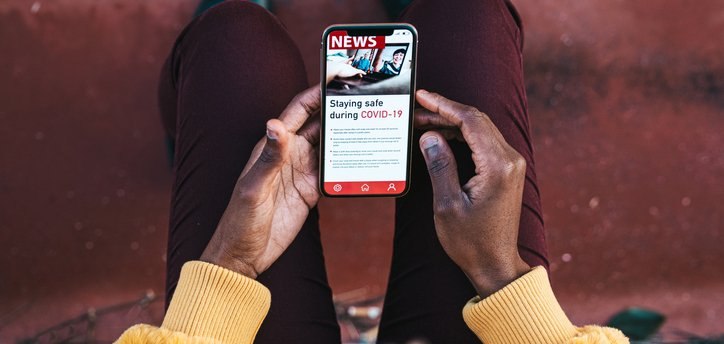
Global: Have mobile devices become popular sources of daily news?
Is reading the news on a cell phone becoming as common as making calls, chatting, taking photos and sending/ receiving emails? Latest data from YouGov’s newest tool, Global Profiles, reveals how many consumers use their mobiles to read the news at least once a day. Global Profiles tracks consumer thoughts, feelings, behaviours and habits, and also monitors global trends and media consumption across 43 markets
In this piece, we’ve chosen 26 countries from all the markets surveyed in Global Profiles. The accessibility and immediacy of receiving the latest headlines could be why 50% of global consumers say they read the news using their mobile phones at least once a day.
Two thirds of South Africans (66%) say they use their mobile phones to get the news - the highest among all markets surveyed. Italy (64%) and Brazil (63%) are a close second and third with more than half of their populations using mobiles phones to keep themselves updated.
Most Asian countries score higher than the global audience – Singapore (58%), Hong Kong (57%), Japan (53%) and India (53%). However, consumers in China and Philippines are slightly less likely than the global audience (49% and 47% respectively) to do the same activity.
While Mexico registers 52% of its consumers saying they read the news on their devices, the other North American markets are not as likely to share the same opinion. Less than two in five Americans and Canadians say they read the news at least once a day on their cell phones (39% and 37% respectively).
Britons (44%) are among the least likely Europeans to check their phones for news. Continuing the downward trend, consumers in the MENA region are among the least likely of all markets in this study to say they get the latest news updates from their cell phones – Egypt and Morocco (36% each).
Globally, there is no difference in reading activities between men and women. However, when further broken down by age, older respondents are more likely than the younger demographics to say they read the news on their mobile devices.
Looking at a few individual markets, Britons aged 55+ are least likely to say they use their cell phones for the news (36%). Those aged between 35 to 44 register the highest proportion in Great Britain (55%), followed by 45-54-year-olds (52%) and 25-34-year-olds (50%).
In the US, age groups of 35-44 and 45-54 register the highest share of consumers who read the news on their mobile phones (45% each). The share drops significantly among 18-24-year-old Americans as slightly less than a quarter (24%) report doing the same.
Receive monthly topical insights about the telco industry, straight to your inbox. Sign up today.
Discover more telco content here
Want to run your own research? Start building a survey now
Methodology: YouGov Global Profiles is a globally consistent audience dataset with 1000+ questions across 43 markets. The data is based on continuously collected data from adults aged 16+ in China and 18 and over in other markets. The sample sizes for YouGov Global Profiles will fluctuate over time, however the minimum sample size is always c.1000. Data from each market uses a nationally representative sample apart from India and UAE, which use urban representative samples, and China, Egypt, Hong Kong, Indonesia, Malaysia, Morocco, Philippines, South Africa, Taiwan, Thailand and Vietnam, which use online representative samples. Learn more about Global Profiles.